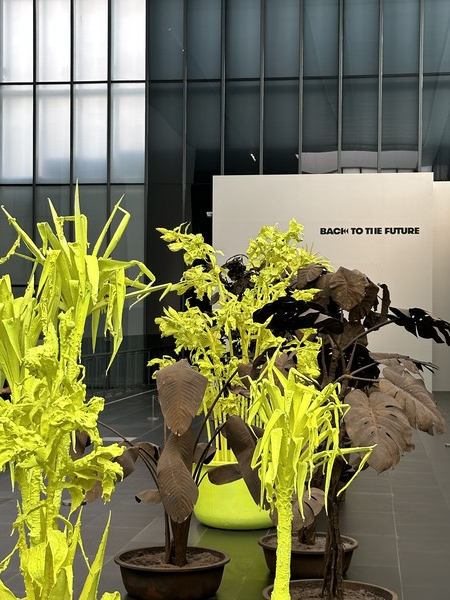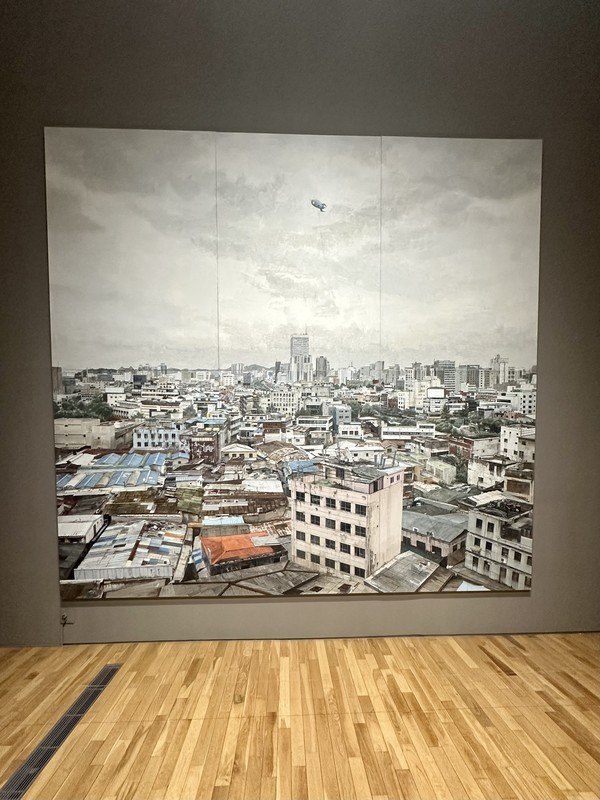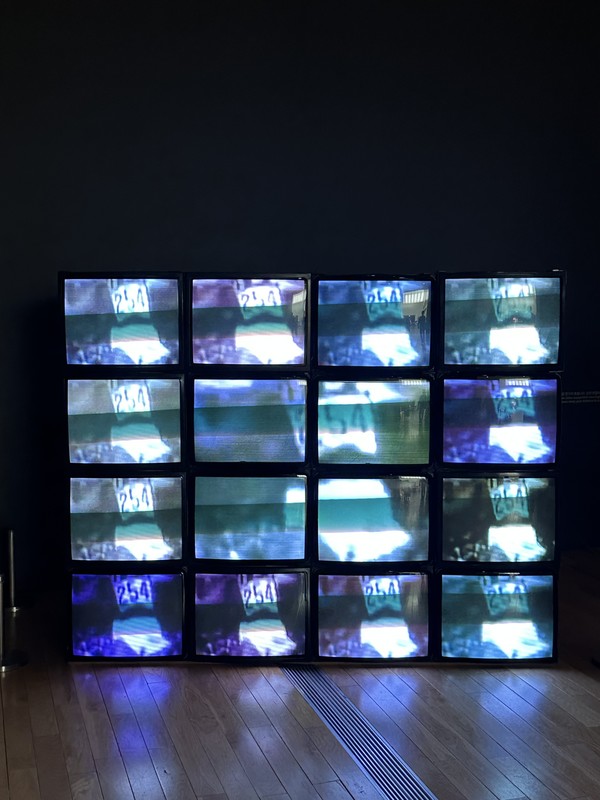The special exhibition "Back to the Future – An Exploration of Contemporaneity in Korean Contemporary Art" at MMCA (National Museum of Modern and Contemporary Art, Korea) stands as a significant display of the museum's collection spanning from 2018 to 2022. The title of the exhibition coincides with the renowned 1985 Hollywood film "Back to the Future," where the protagonist travels through time from 1985. Interestingly, the film's release in Korea in 1987 aligns with the emergence of the context of contemporaneity in Korean contemporary art. The late 1980s to the 1990s witnessed rapid political and social changes both domestically and internationally, which had a profound impact on the younger generation at the time and the realm of pop culture and the arts. This exhibition presents artwork from key artists who grew up and developed in the distinctive atmosphere of the late 20th century, where analog and digital elements coexisted. It focuses on artists who have established their artistic identities during the 1990s and explores their works and ongoing activities from the late 1980s to the 2010s. Thus, visitors can witness the artistic footprints of Korean contemporary art closely, offering an engaging exhibition that invites you to follow the trajectory of Korean modern art.

The exhibition is divided into a total of four sections, and through the curation of artwork in each section, one can grasp the evolving context of contemporaneity within Korean contemporary art—its evolution from the 1990s and its expansion into the 2000s. This setup allows visitors to observe the major trends of contemporary art today within the context of how contemporaneity was established in Korean art through the decades.
A New Era of Diversion, and Paradigm Shift in Art
The first section features artwork that encapsulates the atmosphere of Korean societal environments from the 1990s to the 2000s. During this period, Korean contemporary art took on a unique identity. It reflected both universal and specific aspects due to the global shifts and changes in the world context, coupled with the interconnected Korean social landscape. Centering on the theme of "contemporaneity[1]," the artworks on display capture the perplexed yet excited perspectives of people from that era as they grappled with complex spatiotemporal dimensions, situations, and conditions. The artwork "Men and Women" by Lee Dongki places opposing images and words together on a single canvas. The artist combines disparate concepts and images to reference conventional thought processes associated with certain phenomena. In this work, he portrays figures using imagery and techniques that could be seen in popular comics of the time.

Energizing Nonconformity
In the second section, the notion of “contemporaneity,” as mentioned earlier, is demonstrated not merely as a temporal dimension, but also as a dimension that questions the existing hegemonic structures[2] conveyed through various media works. The late 1990s is designated as the period of significant emergence for single-channel video art. This is the time when expressive aspects unique to auditory senses began to manifest prominently in media art. In them, a distorted and fragmented screen progression is expressed that couldn't be captured through traditional classical representations. The section introduces diverse artwork from that time. Kim Sejin's artwork "Reversed Time" (1998) deals with precious moments from daily life that reverse the physical flow of time. Comprising a series of video clips, the artwork captures everyday actions filmed in sequence, then plays them back in reverse. By presenting the unfamiliar sensation that emerges when videos of commonplace actions are played backward, she aims to provide visitors with a fresh perspective.
Heterogeneity and Its Critical Time and Space
The 1990s in our society was a period marked by the tumultuous collision of benefits and drawbacks resulting from rapid industrialization and modernization from the previous era. Moreover, society had to navigate through a rapidly changing complex situation, as it confronted challenges left unresolved from the pre-modern era while entering the post-modern era. The third section introduces artwork by artists who thrived and built their creative capacities within this dynamic context. They broke free from conventional distinctions between genres and fields, swiftly grasped the changing trends both domestically and internationally, and fearlessly embraced new environments to establish distinct identities. "A Ball of Dwarf" by Jung Jaeho is a painting depicting the landscape of Euljiro. The title of the artwork is taken from a novel by Cho Sehee, which depicted the appearance of Korea during its industrialization. Representing a snapshot of the rapid economic growth in Korea, the artwork features a single 'rocket' hovering in the sky, which intriguingly renders the realistic landscape unfamiliar. By altering the perspective to view the Seoul landscape from above the flying object, the artwork creates a bleak atmosphere, leaving a lasting impression on viewers.

‘Interfering with’ or ‘Intervening in’ the Future
In the final section, visitors are shown how the contemporaneity of Korean contemporary art that emerged in the 1990s has evolved and expanded through media works from the present era we stand in. Our society, much like the Western world, continues the process of ongoing post-modernization. Amidst the continuously shifting contextual currents, visitors can sense the crucial process of securing our unique artistic values. Additionally, by showcasing works from the late 2010s, the exhibition allows viewers to comprehensively grasp the overall trajectory of contemporary Korean art, spanning various periods and trends. An Jung-ju's artwork "Holding Hands with an Eternal Friend" is a video piece that remixes the official themes of the 1998 Seoul Olympics and the 1992 Barcelona Olympics into a single composition. It combines two theme songs into a single track. In certain parts of the video, frames are repeated and playback speed is manipulated to create visual tension. This not only symbolizes the yearning for globalization of that era but also revitalizes the underlying political tensions from a contemporary perspective. Choi Jeonghwa's artwork "Flower of Tomorrow" is a massive plastic sculpture that captivates visitors with its vivid colors. Throughout her career, she has consistently used 'flowers' as a central motif in her work. By transforming artificial ornamental plants commonly found in our living spaces, she represents the life cycle of plants, conveying the inevitability of life and death, a fundamental aspect of human existence.

This exhibition conveys the nature of the programs that MMCA, Seoul, has uniquely developed within its collection. It also reveals the future direction of exhibitions to come. Moreover, it provides an excellent opportunity for visitors to appreciate significant artwork within the context of art history. As implied by the exhibition title "Back to the Future," reflecting on the past is essential for our art to intelligently progress toward the future. In a world where we are accustomed to the digital realm and beyond, this exhibition offers a fresh perspective by showcasing the juxtaposition of analog and digital.

Date: 2023.06.16~2024.05.26 10:00~18:00 (Wed, Sat Night Open Until 21:00 / Closed: Jan 1st, Seollal, Chuseok)
Place: MMCA Seoul
Ticket Price: Free
Running Time: 50 Minutes

